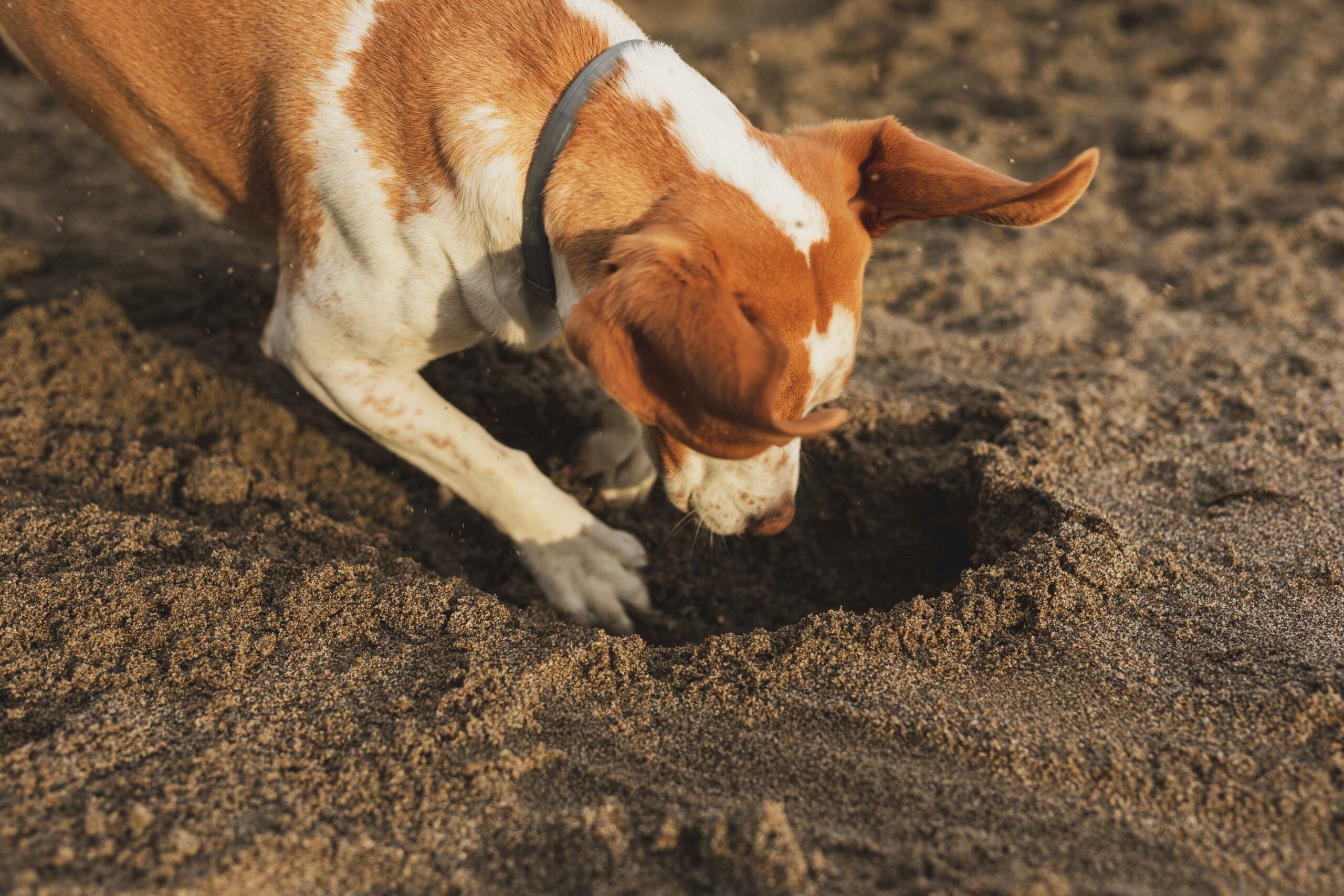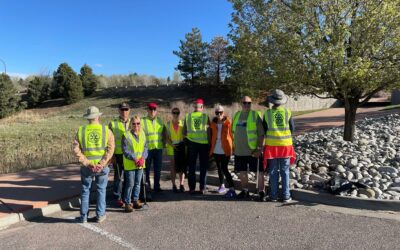
So you’ve nurtured your yard and gardens only to come home to a large hole created by your favorite canine? Digging behavior in dogs can have many motivations, but on hot summer days, many dogs may dig a hole to cool off. With their ability to hear high frequency sounds, and their highly acute sense of smell, other dogs dig as a direct result of odors or sounds such as those from voles and moles that attract the pet from beneath the ground. Pregnant bitches dig when nesting. Others dig to bury or retrieve bones. Dogs also dig to escape from confinement or due to separation anxiety.
Digging may also occur when pets are left alone with insufficient stimulation or attention, similar to destructive chewing. This is particularly so in puppies and highly energetic dogs. The first step is to determine why your dog is digging. Then, you can take steps to curb the habit.
Think like Your Dog
The first step in treating inappropriate digging behavior is to determine why the dog is digging. Prevention, remote punishment, and booby traps may be needed, but reducing your dog’s motivation to dig, and providing for all of its needs are essential so that digging is not merely redirected to a new location. Inhibiting or preventing all digging, without understanding and dealing with the dog’s motivation could result in new behavior problems such as chewing, excessive vocalization, or escape behaviors.
For example, dogs that dig because they are pursuing prey will continue unless you can get rid of the prey. Dogs that dig in an attempt to get cool need a cool resting area with plenty of shade and water. On very hot days, it may even be best to bring your dog inside. Dogs that are digging to bury or to uncover previously buried objects could be provided with an area where this type of digging is acceptable.
One of the most common reasons for digging is as a form of play and exploration. Additional play, training and exercise sessions can help keep digging behaviors under control, especially if your dog is young and active. Dogs that continue to dig may require additional stimulation to keep them occupied when the owners are not around. Ensuring that your dog has a regular and sufficiently enriching daily routine can go a long way in preventing digging. Whenever your pet is left outdoors unsupervised, it should be at a time when it has had sufficient social interaction, exercise, and reward-based training.
Providing a variety of toys for object play can help give the pet constructive activities in which to participate while outdoors. In fact, leaving the dog alone unattended can be an excellent time to leave food manipulation toys, so that the dog spends its time working for food rather than digging. In addition, daily walks around the neighborhood provide exercise and stimulation that can be very satisfying for dogs.
If your dog is outside all day and digging is taking place, you do need to ask yourself if keeping the dog inside may be a better answer. This is particularly true for the dog that digs to escape from the yard or confinement area. If you are unable to keep the dog inside, then you may need to address those problems first.
Get Creative
- Provide An Allowable Digging Area. For some dogs, it may be useful for you to create an area where the dog is allowed to dig. This could be a spot in the backyard where you have placed soft, loose dirt; perhaps you can use railroad ties to delineate the location. Next, make this place somewhere that your dog would like to dig. Bury things there that your pet would like to dig up. You might need to start with food that is only lightly covered. Then put things deeper into the ground. If you do this at irregular intervals (when your dog is not watching), your dog should be more likely to dig there than other locations in your yard. Another option is to allow the dog to dig in a spot where it has already chosen, and to prevent digging in other locations by supervision, confinement (prevention), or booby traps.
- Supervision And Correction. Supervision and direct intervention (shaker can, verbal reprimand or water sprayer) can be used to prevent inappropriate digging in the owner’s presence, but will not stop the behavior in the owner’s absence. Remote correction (turning on a hose or sprinkler, pulling on a long leash, using remote citronella collar), booby traps (placing chicken wire, rocks, or water where the pet digs), or covering the surface with one that is impervious (asphalt/patio stones) might teach the pet to avoid the digging site even in the owner’s absence. These techniques do not however prevent the pet from digging in other locations.
When you are unavailable to supervise your dog, housing the dog indoors is the most practical solution until he or she has learned to stay outdoors without digging. If you would like to continue to leave your dog outdoors, it is best to confine the dog to an area such as a pen or run, so that it has no access to the digging areas. The run should be inescapable, and could be covered with gravel, patio tiles or have an asphalt or concrete floor so that it cannot escape or do damage. Provide sufficient exercise and stimulation before confining the dog and an adequate number of treats and play toys in the run to keep the dog occupied.


0 Comments